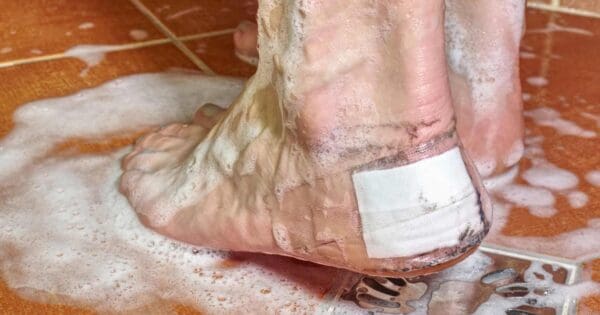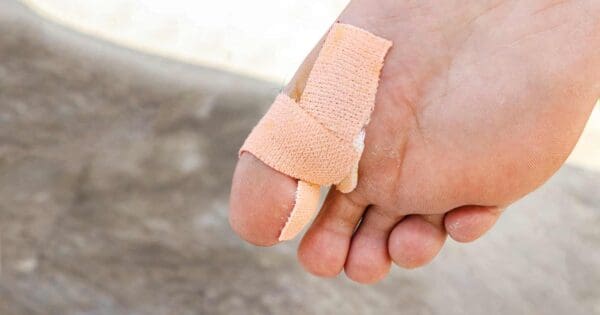What often concerns hikers even more than leeches and blisters is, “How do I go to the toilet in the bush?”
There’s no need to panic, it’s something humans have been doing for years. Before you go to the toilet on a hike, make sure you do the following first:
- Use a toilet where possible. The best way to go to the toilet in the bush is to use a toilet if one exists. Do some research ahead of your hike to find out if there are toilets at the trail-head or anywhere along the trail you plan to hike
- Learn about Leave No Trace ethics. One of the best things you can do for your fellow campers is to leave the ground as clean or cleaner than you found it. This will require burring your human waste or better still, packing it out
- Find out if there are any regulations on human waste in the area where you’re going. Some high-elevation, sensitive or heavily traveled areas require people to pack out solid human waste.
Beyond that, there are some important guidelines to follow, so let’s dig right in.
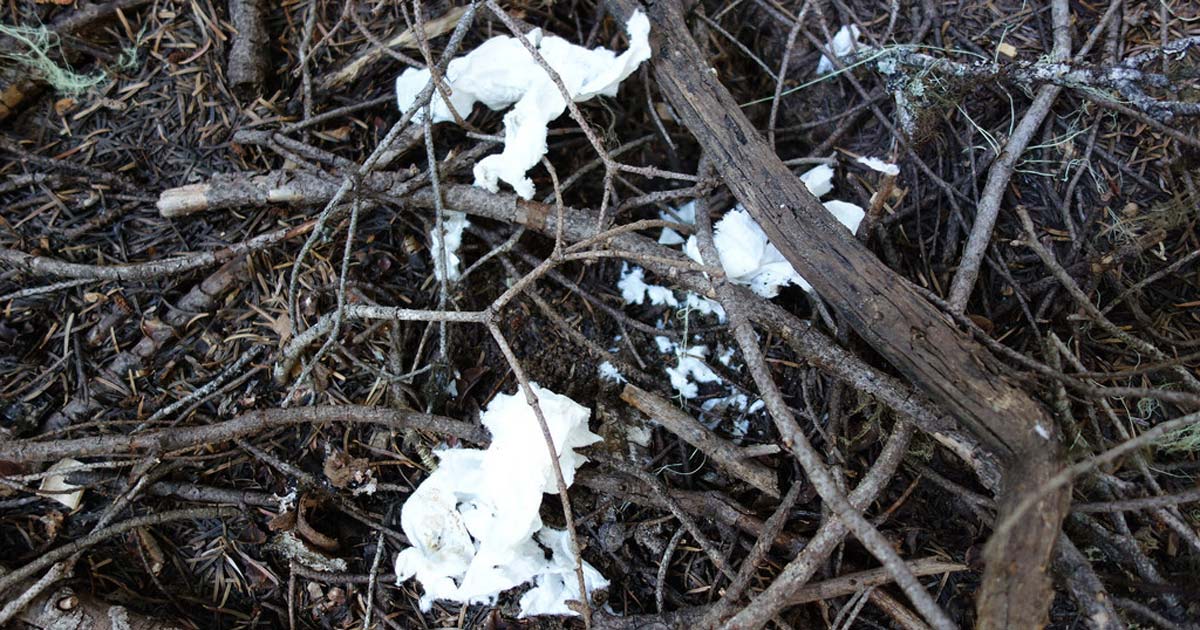
How to go to the toilet on a hike might not be a topic we are used to discussing, but it’s important to know the various methods of going to the toilet when you’re out on the trail. I’m sure you’ve seen used toilet paper or even poop on the trails. How people can leave their business laying around is beyond me. But more importantly, it pollutes soil, water and can make animals sick. My wife and I recently returned from a hike in Tasmania’s Southwest Wilderness and I was appalled to see toilet paper scattered in the bushes surrounding the campsite. There is a portable toilet literally 50m away. It’s important to Leave No Trace when you go to the toilet.
Human waste contains all kinds of pathogens that aren’t normally found in nature. If those pathogens enter a water source, they can make people and animals sick. Burying your poop gives it time to decompose and for the soil to filter out the pathogens. Burying poop also hides it from view, this is a bonus for obvious reasons. Another reason for burying your business is that many animals like to eat human poop or roll in it. This can attract wildlife to your camp and can make animals sick.
How to pee in the bush
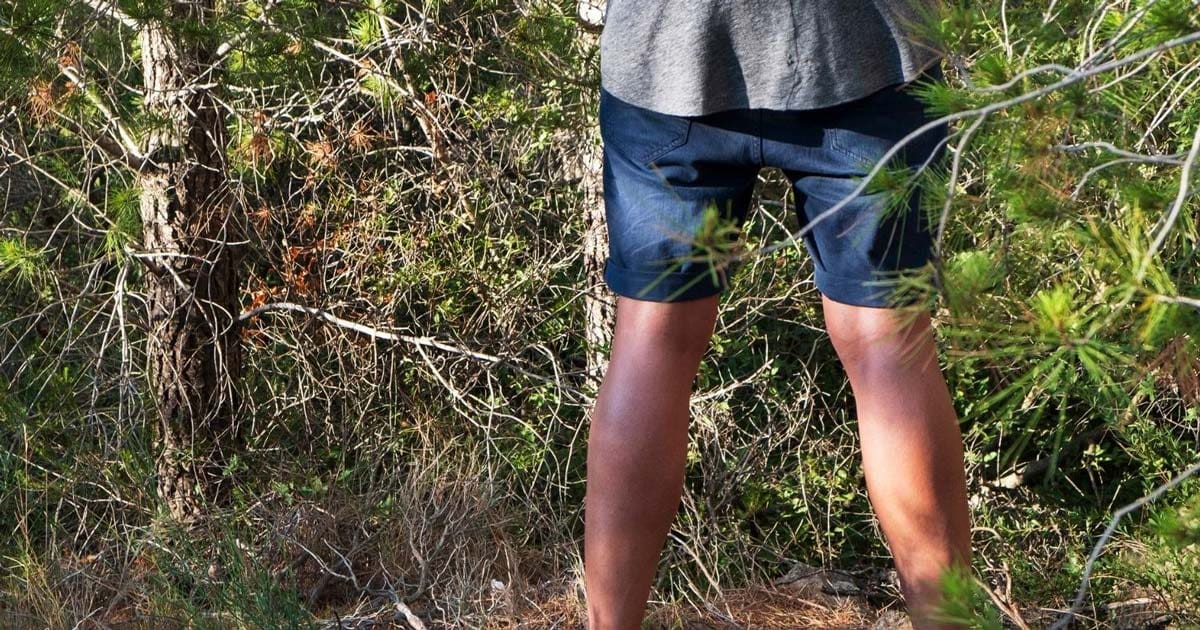
Peeing on the trail is pretty straightforward. Choose a place that’s well away from your trail or campsite. If you are hiking or camping in a group, you may choose to designate more than one location. When choosing your specific spot, keep the following in mind depending on where you are:
- Small bodies of water: Never urinate directly into a small pond, stream or lake. Always move 100 metres away from a watercourse
- Large bodies of water: If you’re in a group hiking or camping along a large river, Leave No Trace recommends peeing directly in the water; the river volume will dilute it, and the camping area avoids getting over-saturated
- Alpine areas: If you are hiking up in the Alps, peeing on a rock surface is recommended. Feral animals are attracted to the salts in urine, and may dig up fragile vegetation to get the salt.
Toilet tips
Going to the toilet is nothing new but there are notable differences between using a western toilet versus a blade of grass. So, here’s a few tips.
If you’re squatting to pee, find a soft spot of earth that absorbs quickly so you won’t get splashed. A wide stance helps you stay balanced. Make sure your pants, boot laces, straps, etc. are well out of the way and pay attention to which way the ground slopes and make sure you’re uphill so any stream runs away from you.
If there’s not much privacy where you are, you can also squat with a lightweight sarong, towel or hiking skirt wrapped loosely around you. Or, if you’re hiking with someone, that person can act as a lookout and warn you of any approaching hikers (and vice versa).
A pee funnel let’s you pee standing up and can be helpful in cold or rainy weather, or in a desert or alpine area where there’s little to no privacy. Practice at home before your trip. Rinse it if possible, and carry it in a plastic bag.
On a day hike, you can carry a couple wads of toilet paper or tissue and a small zip-top plastic bag. Put the used toilet paper in the bag and dump the paper in your toilet when you get home. Toilet paper takes weeks or months to break down and seeing it spread all over the bush is disgusting.
While hiking, some people prefer to “shake dry” or use a bandana as a “pee rag.” Tie the bandana to the outside of your pack to dry it out, and rinse it when you can.
If you’re sleeping in a tent and don’t want to go out in the cold of night, you can use a bottle (in conjunction with a pee funnel if needed) that you designate for this purpose (definitely practice this at home first). Close the bottle and place it just outside your tent. In the morning, dump it out in the bushes away from camp.
How to poop in the bush
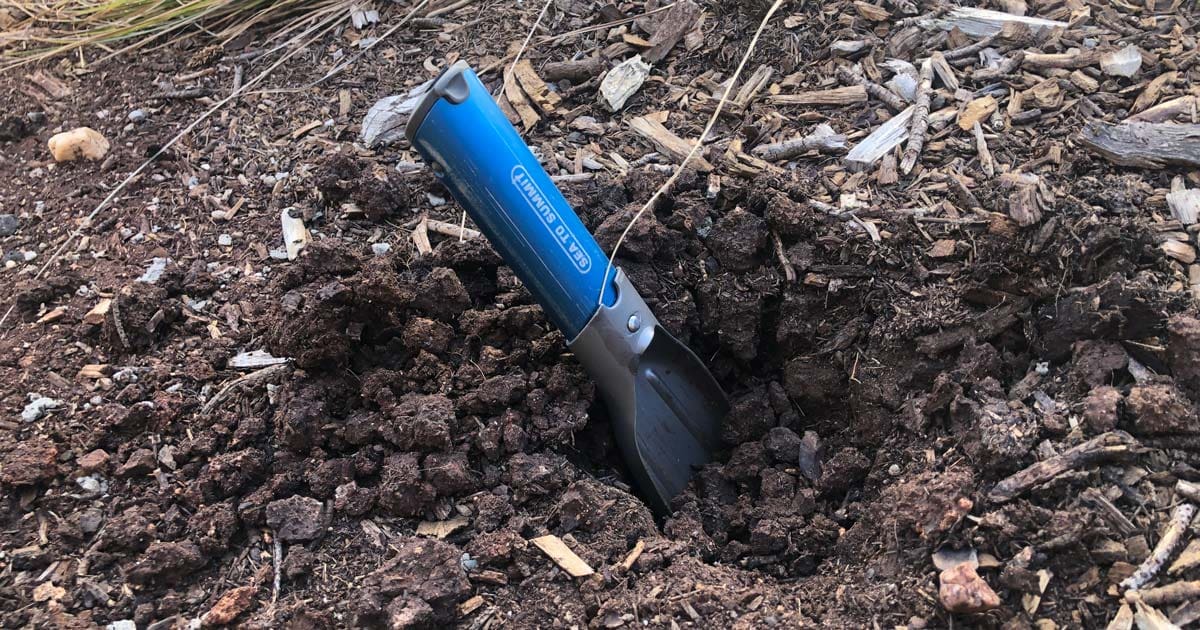
In areas where there is no access to toilet facilities, consider packing out all faecal waste and paper where possible (using a Wag Bag or equivalent) – this is the best way to ensure minimal impact from human waste.
The Wag Bag Technique
A Wag Bag is a special type of toileting bag used to poo in, store and transport your poo. It’s like a big garbage bag inside a small strong non-see-through zip-lock bag. You simply find a private spot, poop into the big bag, roll it up and pop it into the zip-lock and carry out. It’s important to practice this at home, for best results. Wag Bags are the most sanitary, safe, environmentally-friendly, portable toilet solution available.
If there are no toilets and you cannot carry out your waste, you should bury your poop. Follow these steps:
- Take a hand trowel
- Choose a spot at least 100m away from campsites and watercourses
- Dig a hole 15cm deep. Bury all faecal waste and paper, mixing it with soil to help decomposition and to discourage curious animals.
- Use a different location each time to ensure your impact is reduced
- Carry out all female hygiene items such as sanitary pads and tampons. Menstrual cups are a reusable and hygienic alternative to disposable sanitary items, requiring freshwater rinses between use.
When nature calls, you have to go but don’t wait until it’s an emergency to find a suitable place. It’s stressful and you’ll likely end up not being able to get far enough off the trail or away from water. If you find yourself tight for time, quickly find a good spot, poop, then dig a 15cm deep hole next to your poop and use sticks to move it into the hole.
Pack out your toilet paper in a plastic bag. You can wrap your used paper in clean paper for a bit more privacy. Some hikers Iv’e spoken with like to bring an opaque plastic bag to pack out their toilet paper so you can’t see inside. Even when buried, toilet paper takes a few weeks or months to break down. In the meantime, wildlife like to dig it up. If you don’t have any toilet paper, you can use natural substances like moss, leaves, rocks (ouch), or snow.
Cover the hole with the original dirt and completely fill the hole. Tamp it down with your foot. Place a rock or branch over the space to discourage digging critters. You can place an upright stick in it to discourage the next humans in need of a hole.
After you poop, use hand sanitiser to clean your hands well. When hikers get sick, they often think the root of their problem is unclean water. Unfortunately, it’s usually just poor hygiene.
Dealing with dog’s poop
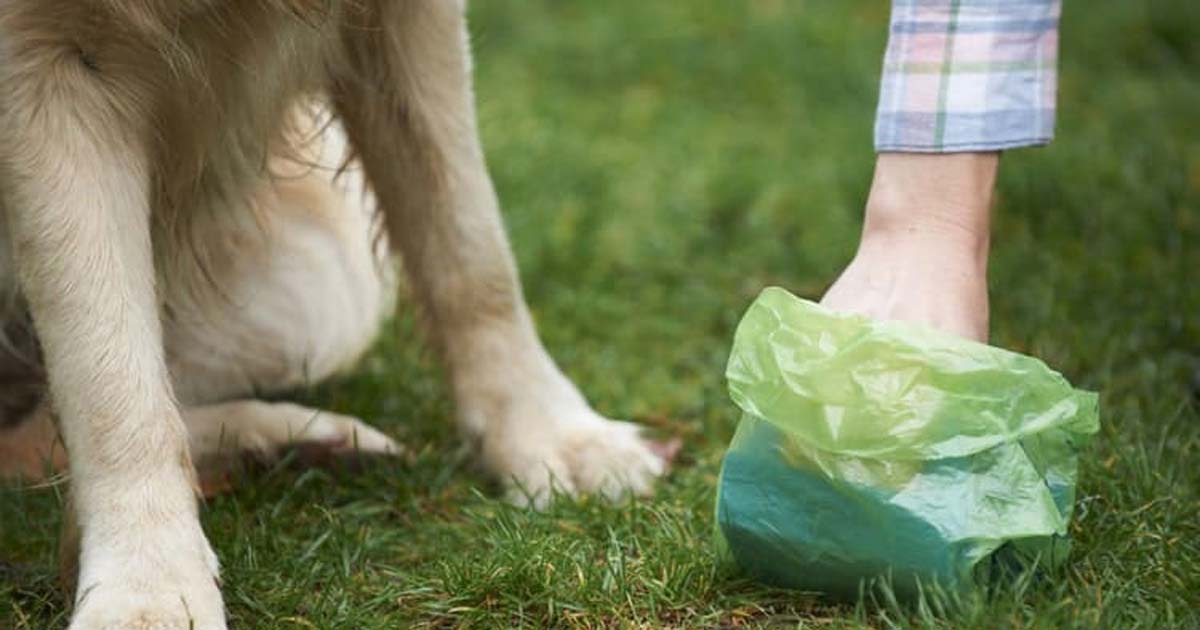
Just like human poop, dog poop contains all kinds of bacteria that aren’t normally found in nature. Your dog’s poop can make native animals sick. The smell of dog poop can also attract other dogs who might eat it or roll in it. Bring poo bags and pack out your dog’s feces. If the smell bothers you, bring a sealed container to put the poo bags in.
Pack a toilet kit
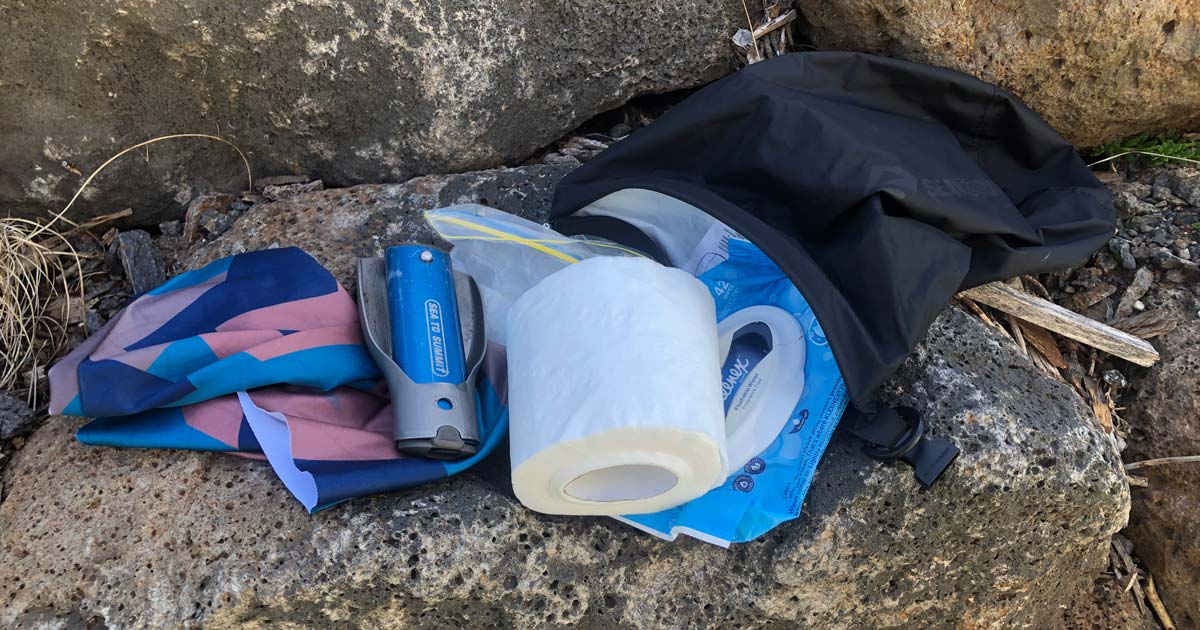
I keep a dry bag with my hikers toilet in my pack at all times. That way I’m always prepared to go to the toilet the Leave No Trace way. Here’s what’s in my kit:
- Lightweight hiking trowel
- Toilet paper
- Antibacterial Wipes
- Ziploc bag to pack out toilet paper
- Reusable pee cloth
Leaving the trail – Leave a sign
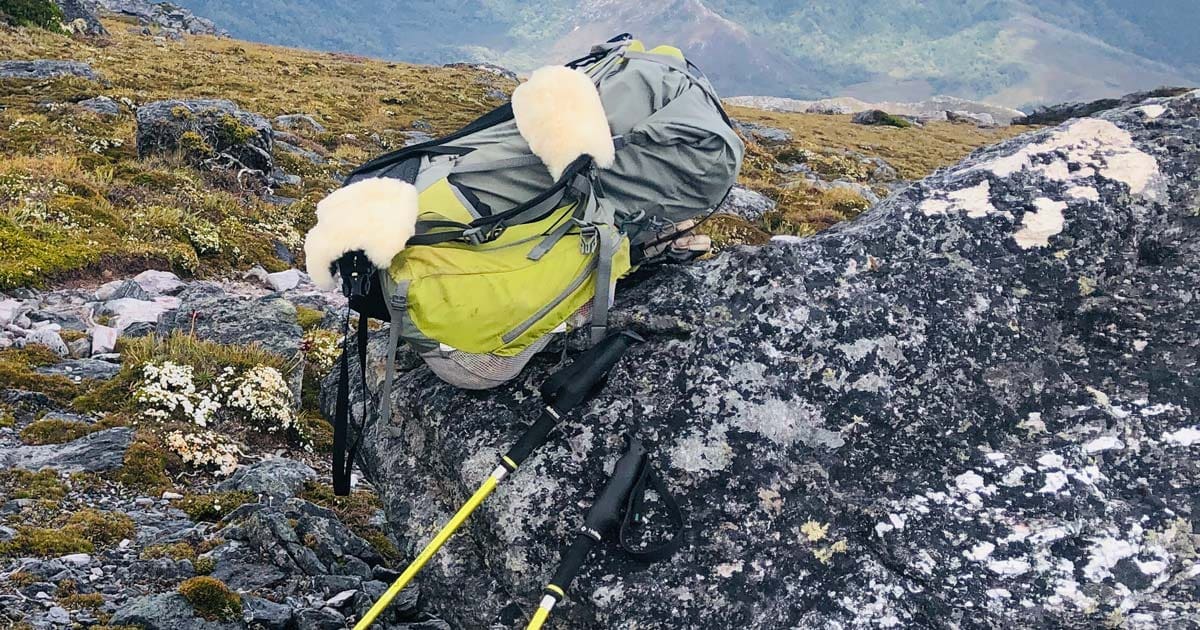
When you’re out hiking in a group or with a mate, there’ll be a point where someone has to leave the trail to visit natures bathroom. It is all too common for people to simply walk off the trail, pack in hand when nature calls. If you are leaving the trail for a toilet stop, make sure you leave a sign.
You might be surprised that many people have become lost after wandering a short distance off the trail. In some circumstances it is easy to become disoriented and not remember where you came from. When you leave an item on the trail at the point where you left, others know where you left the trail and will have a better chance of finding you.
Personally I prefer to keep my pack with me and leave a non essential item from my pack. This way, if I become lost, I know I will have the necessary gear with me to keep safe until I am found. Make sure you leave something as a marker. Your pack cover, hiking poles, a hat, anything that will indicate this is where you left.
Before you head out for your next hike, make sure you have the supplies you need with you and know the proper techniques to follow when going to the toilet on a hike

